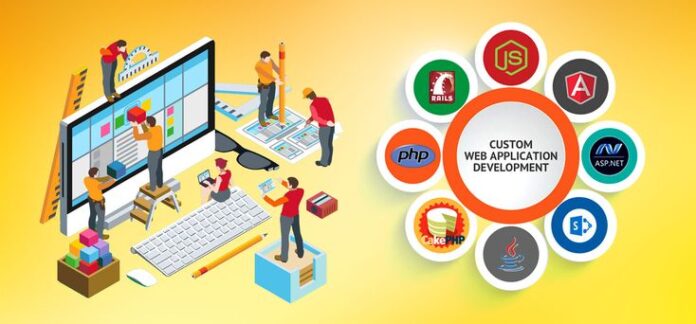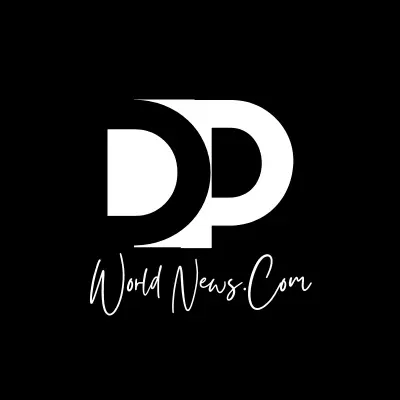Microsoft’s NET Framework offers reliable tools for custom projects. Professional developers use this technology to build secure websites. Companies need expert guidance to choose the right development service. The right partner ensures project success and long-term growth.
Enterprise web solutions require careful technology planning and skilled software developers. Custom web projects need specific software features and advanced technology functionalities. Business owners must understand their technical requirements clearly. Professional software development teams provide consultation and technical expertise. .NET Tech Development software solutions create powerful web applications for modern businesses.
Understanding .NET Framework Benefits
The .NET Framework provides excellent security features for web applications. Microsoft regularly updates the platform with new improvements. Cross-platform compatibility allows applications to run on different systems. Portfolio showcasing similar enterprise web solutions projects. Scalability options help websites grow with business needs. Performance optimization ensures fast loading times for users.
Development costs remain reasonable compared to other enterprise solutions. Open-source components reduce licensing fees for many projects. Skilled developers are widely available in the job market. Community support provides helpful resources and troubleshooting guides. Long-term maintenance becomes easier with standardized coding practices.
Key Features to Look For
- Professional NET Tech Development teams with certified expertise
- Clear communication channels and project management systems
- Comprehensive testing procedures and quality assurance processes
- Post-launch support and maintenance service packages
- Transparent pricing models with detailed cost breakdowns
Quality assurance processes ensure bug-free applications at launch time. Testing procedures should include security audits and performance checks. Code reviews maintain high standards throughout development cycles. Documentation helps future maintenance and feature additions. Version control systems track changes and enable easy rollbacks.
Types of Web Solutions
Custom web applications serve specific business needs and requirements. E-commerce platforms handle online sales and payment processing safely. Customer relationship management systems organize client information effectively. Content management systems allow easy website updates and modifications. Database applications store and manage large amounts of information.
Enterprise web solutions include resource planning systems that integrate different business functions. Business intelligence tools analyze data and generate useful reports. Web portals provide secure access to internal company resources. API development connects different software systems and applications. Cloud-based solutions offer flexibility and cost-saving benefits.
Evaluation Criteria for Developers
Technical expertise determines the quality of final web applications. Years of experience show proven track records with clients. Industry specialization helps developers understand specific business needs better. Team size affects project capacity and timeline capabilities. Geographic location influences communication and collaboration effectiveness.
Development methodology impacts project organization and delivery schedules. Agile approaches allow flexibility and iterative improvements during development. Quality standards ensure consistent code quality across all projects. Security practices protect sensitive business data and customer information. NET Tech Development professionals should demonstrate scalability planning for future growth.
Project Planning and Requirements
Clear project requirements prevent scope creep and budget overruns. Detailed specifications help developers understand exact business needs. Timeline expectations should be realistic and account for testing phases. Budget planning includes development costs and ongoing maintenance expenses. Communication protocols establish regular update schedules and feedback sessions.
Requirements gathering involves stakeholder interviews and business analysis sessions. Functional specifications define what the application should accomplish. Technical requirements outline system capabilities and integration needs. User experience design ensures applications are easy to use. Documentation standards help maintain project clarity and organization.
Technology Stack Considerations
Modern .NET versions offer improved performance and security features. Database selection affects data storage and retrieval capabilities. Frontend frameworks determine user interface design and functionality. Cloud hosting options provide scalability and reliability benefits. Integration capabilities connect with existing business systems and tools.
Security frameworks protect against common web application vulnerabilities. Performance monitoring tools track application speed and user experience. Backup systems ensure data protection and disaster recovery capabilities. Update mechanisms allow easy deployment of new features and fixes. Testing frameworks ensure code quality and functionality verification.
Budget Planning and Cost Factors
Development costs vary based on project complexity and requirements. Hourly rates differ between junior and senior developer levels. Fixed-price contracts provide predictable project costs and budgets. Time and materials pricing offers flexibility for changing requirements. Maintenance costs should be included in long-term budget planning.
Additional expenses include hosting fees and third-party service costs. Licensing fees may apply for certain development tools and components. Training costs help staff learn new system features and functions. Support contracts provide ongoing technical assistance and troubleshooting help. Upgrade costs ensure applications stay current with technology changes.
Security and Compliance Requirements
Data protection regulations require specific security measures and practices. User authentication systems control access to sensitive information areas. Encryption protocols protect data transmission and storage processes. Regular security audits identify potential vulnerabilities and weaknesses. Compliance documentation proves adherence to industry standards and regulations.
Password policies enforce strong authentication practices for all users. Access control systems limit user permissions based on roles. Audit trails track system usage and data access patterns. Backup procedures ensure data recovery capabilities during emergencies. Security updates protect against newly discovered threats and vulnerabilities.

Testing and Quality Assurance
Comprehensive testing ensures applications work correctly before launch dates. Unit testing verifies that individual code components function as expected. Integration testing confirms that different system parts work together properly. Performance testing identifies bottlenecks and optimization opportunities for improvement. Security testing reveals potential vulnerabilities and protection gaps.
User acceptance testing involves real users validating application functionality. Automated testing tools speed up repetitive testing procedures. Bug tracking systems organize issue reporting and resolution processes. Code reviews maintain quality standards throughout development cycles. Load testing ensures applications handle expected user traffic volumes.
Post-Launch Support Services
Ongoing maintenance keeps applications running smoothly after launch dates. Bug fixes address issues discovered during normal operations. Feature updates add new capabilities based on user feedback. Performance optimization improves speed and user experience over time. Security patches protect against newly discovered threats and vulnerabilities.
Technical support helps users resolve problems and answer questions. Training services teach staff how to use new features. Documentation updates keep user guides current and accurate. Monitoring services track application performance and availability continuously. Enterprise web solutions require professional backup services to protect data and enable recovery.
Communication and Project Management
Regular status updates keep stakeholders informed about project progress. Clear communication channels prevent misunderstandings and delays during development. Project management tools organize tasks and track completion status. Meeting schedules provide structured opportunities for feedback and questions. Documentation standards ensure important information gets recorded and shared.
Milestone tracking helps monitor progress against original project timelines. Change request procedures handle scope modifications and additional requirements. Risk management identifies potential problems and mitigation strategies. Quality gates ensure standards are met before moving to the next phase. Feedback loops allow continuous improvement throughout development processes.
Making the Final Decision
Vendor evaluation requires careful comparison of capabilities and costs. Reference checks verify previous client satisfaction and project success. Contract negotiations establish clear terms and expectations for both parties. Service level agreements define performance standards and response times. Payment terms should align with project milestones and deliverables.
NET Tech Development services enable businesses to create powerful web applications. The right partner provides technical expertise and ongoing support. Quality applications drive business growth and customer satisfaction. Professional development services ensure project success and long-term value. If you want to know more about tech, follow DPWorldNews.





